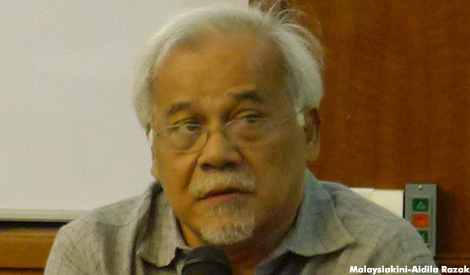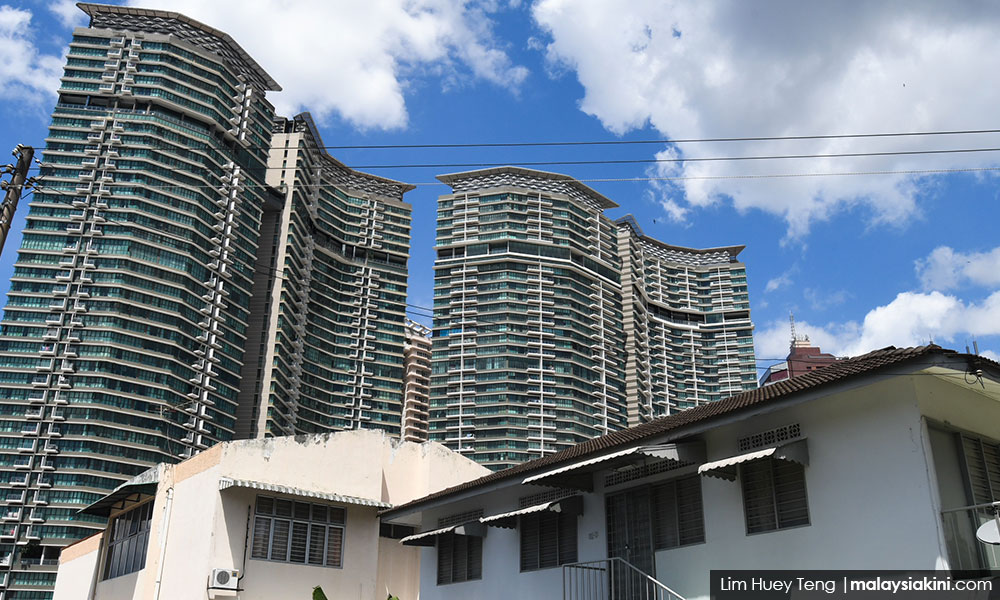COMMENT | Last week, a recommendation to introduce an Islamic economic model in Malaysia was made by well-known economist Kamal Salih. He had said this in response to questions raised when he met with the Council of Eminent Persons.
On further reading, his recommendation was directed to a query on the bumiputera agenda. Kamal was of the view that the capitalist model that has been followed in Malaysia has not been able to address the equity agenda in Malaysia.
Quoting various studies, he also warned that certain kinds of inequalities may have worsened, especially with respect to the bumiputera community. This is a factual reality in Malaysia and poses to be a red-herring in the overall development record of Malaysia.
Malaysia as a nation has been blessed in many ways. Blessed with abundant natural resources – previously tin and then rubber being brought in by the British. This was followed by the discovery of oil combined by the switch to palm oil as an export commodity in Malaysia.
We have also been fortunate to be geographically well-placed along the main sea-trade route between India/Europe and China, making trade activities central to our small trading nation for centuries. We have also been spared from any major natural disasters, while all around us we witness devastating earthquakes and typhoons that cause havoc to communities.
We have also had a relatively good economic planning framework since the 1950s. All of these have contributed to Malaysia’s development record over the last 60 years. While not perfect, no one can deny that Malaysia has performed relatively well, especially for a multi-ethnic, multi-religious plural country.
Growth with equity
Combining ‘growth with equity’ has always been the twin economic development goals of the last five decades. Since the 1970s, the state has played an active role in directing economic development efforts.
From the direct state involvement via SEDCs of the 1970s, to the state directed privatisation era of the later 1980s and 1990s, to the GLC and GLIC dominant strategy since the early 2000s – the state has always made its presence felt.

Having natural resources such as oil and a thriving oil palm sector and related industries has spurred Malaysia’s economy forward and has been at the base of its industrialisation process. This was complemented by a debatable heavy industrialisation attempt in the mid-1980s, as well as a FDI dominated export targeted electrical and electronic manufacturing effort.
The words ‘Made in Malaysia’ in electrical appliances, as well as components of computers and other electronic devices, symbolise Malaysia’s achievement in this effort.
Throughout these decades, the capitalist model has been the model adopted, albeit with modifications to suit the Malaysian context and political preferences. We may have started with the British form of capitalism, but during the 1980s, modified it to incorporate Japanese and Korean experiences, especially with regards to the role of the state in directing industrial development.
The 1980s what was to become known as the era of ‘Mahathir’s economic policies’, a set of policies that at once adopted a capitalist mode of production, but also saw a heavy state presence in trying to nurture a ‘bumiputera commercial and industrial community’.
In the name of equity, bumiputera were given certain preferences and awarded opportunities to be involved in the modernisation and industrialisation processes.
While in quantity Malaysia may have generally achieved the targets of the bumiputera affirmative action policies, the quality of the output has been the topic of serious debate. We leave this quality issue for another occasion.
What we would like to focus here is the equity goal itself. While ethnic criteria have been at the centre of the bumiputera policies since the 1970s, there is increasing evidence to show a pressing need to focus on other criteria of equity, for example, intra-ethnic inequality and equity as well as geographical inequality.
Measures of income inequality over the decades seem to support Simon Kuznets’ hypothesis of an initial increase in inequality, followed by a reduction of income inequality as the country achieves even higher per capita income.
However, it is the governments’ own reports as well as interesting studies, such as Muhammed Abdul Khalid’s 2016 book The Colour of Inequality, that bring to attention numerous other forms of inequality that must be addressed.
In the 11th Malaysia plan, it was acknowledged that intra-bumiputera inequality was an issue to be given serious attention. Bumputera in Sabah were shown to be left behind despite decades of pro-bumiputera policies.

The political challenges associated with an East Malaysia seen to be left behind forced the previous government to allocate much more resources in annual budgets to Sabah and Sarawak over the last few years.
In addition, inequality among the Indian Malaysian community has become a national development challenge. They are seriously overrepresented in prisons as well as crime statistics. So much so that a dedicated Indian Malaysian blueprint has been initiated.
Other than debatable income inequality figures, one must also look at wealth inequality as an equally, if not more important form of inequality in Malaysia and among all ethnic groups today. The recognition of the need to focus on the Bottom 40 or B40 in the 11th Malaysia plan is clearly a recognition of this challenge.
Income levels for the average Malaysian is still very low. There is too big a gap between average incomes and the median income in Malaysia. For example, the median household income for a household of 4.5 people in Malaysia is still only RM5200 in 2017. You are talking about households that have twin income earners at least, and who could only ‘afford’ a housing facility for less that RM200,000.
In the Klang Valley, this not being able to afford any type of home except low-cost houses/flats. This also indicates that 50 percent of households will have even less than that.
Employee Provident Fund statistics have also clearly stated that the concentration of savings in EPF accounts is very skewed to a small wealthy upper middle and upper-income group- possibly in the top 1-1.5 percent of income earners.
Affirmative action cannot be race-based
What this means – and this is where Kamal’s observation comes in – is that the capitalist model used in the country has failed to achieve an equitable and just Malaysia, despite having all kinds of policies to assist in achieving this goal.

This includes all the affirmative action policies to assist the bumiputera community who were said to be economically backward.
What seems to be clear is that affirmative action policies to assist the disadvantaged cannot be based primarily on ethnic criteria. As in the Malaysian case, due to abuse and misuse, it will just create large inequality between the rich and poor in all communities, including the bumiputera.
The wealth inequalities measured by the Gini coefficients for Tabung Haji savings and Amanah Saham Nasional unit trust schemes show very stark concentrations of wealth in the hands of a very small segment of bumiputera. This is where Kamal’s suggestion to have an Islamic economic model to replace the capitalist model is worth exploring further.
Islamic economics, a relatively new approach and discipline to address economic challenges faced in society, calls for an emphasis on socioeconomic justice as its paramount feature and objective.
The higher purposes of maqasid al-shariah are very clear in that the ultimate aim of syariah based economic policies, as well as its approaches, tools and instruments have to keep socio-economic justice as its primary goal.
Hence, distributive issues cannot be left as a by-product of growth and efficiency criteria. Some may even argue that since the higher purpose of the syariah is justice, it is growth that should be subservient to justice.
There is a need to explore more thoroughly the modern capitalist neoclassical economics obsession with growth, accumulation and investment in order to have more growth.
This capitalist approach also glorifies free markets in the name of freedom and democracy. However, freedom has to be for all members of society, and not just for the privileged few who have financial capital.
Along economic lines
Affirmative action in economics must be reoriented along economic lines and criteria rather than ethnic lines. The abuse and misuse of these policies clearly show that socioeconomic equity cannot be achieved with the current capitalist model.
Since an overwhelming majority of bumiputera are Malays and by definition, Muslims, there is a rationale to the use of an Islamic economic model. Coincidently, in 1982, the government of Dr Mahathir Mohamad introduced the Look East Policy and also the Inculcation of Islamic Values Policy.
For the former, besides promoting Japanese and Korean business practices and partnerships, it also wanted to emulate the noble values and work culture of the Japanese and Koreans such as hard work, diligence, etc., – values that made them economic powerhouses in their own right.
The values promoted in the Islamic policy reforms in the 1980s, meanwhile, were also primarily ‘economic’ and very similar to those of the Look East Policy, such as trustworthiness (amanah), dedication, hard work, sincerity etc.
Although aimed at civil servants, 90 percent of whom were Malays, the inculcation of Islamic values wanted to change not only the mindset, attitudes and work culture of all the Malays, but of all Malaysians too.
An Islamic economic model is one that puts the welfare of society in the forefront. It makes economic activity and the pursuit of material gains not as the end in itself, but as a means to achieving greater success. This greater success means cooperating to prospering everyone so that the whole community advances.

Growth is needed, but everyone must benefit from that growth. No one should be left behind. Income levels may increase, but not at the expense of creating widening inequalities among society members.
Ethics cannot be separated from economics
Developing a new economic model requires the acceptance of the fundamental principle that ethics cannot be separated from economics. This proposition is now increasingly being incorporated into all development frameworks, including the Sustainable Development Goals of the United Nations.
Ethics – and we argue, religion as a source of ethics – can play a positive role.
In plural Malaysia, some could be wary of the use of religion in development policy. However, as stated by Kamal, the ethical values promoted in the Islamic economic model are universal. The challenge is not religion as a source of ethics, but how we understand religion and apply it in plural Malaysia.
The greater challenge is being blinded by outdated capitalist models that promote greed without responsibility, and ‘freedom’ without accountability, as witnessed in recent financial crises.
The Islamic economic model that Kamal talks about has been developing, albeit slowly, over the last four decades. There is no doubt that an Islamic economic model can play a positive role in Malaysia, not only for the bumiputera community or Muslims, but all Malaysians.
It is imperative for those policymakers to realise that religion, an important source of values for all communities in Malaysia, can be a uniting force in new Malaysia.
The challenge is how we present it and how we learn to understand and accept others in our common land of opportunity. An ethical economy must be a part of that new Malaysia and Malaysians of all faiths should be able to contribute to this.
MOHAMED ASLAM MOHAMED HANEEF teaches at the Department of Economics and is the director of the Centre for Islamic Economics, International Islamic University Malaysia.
The views expressed here are those of the author/contributor and do not necessarily represent the views of Malaysiakini.

